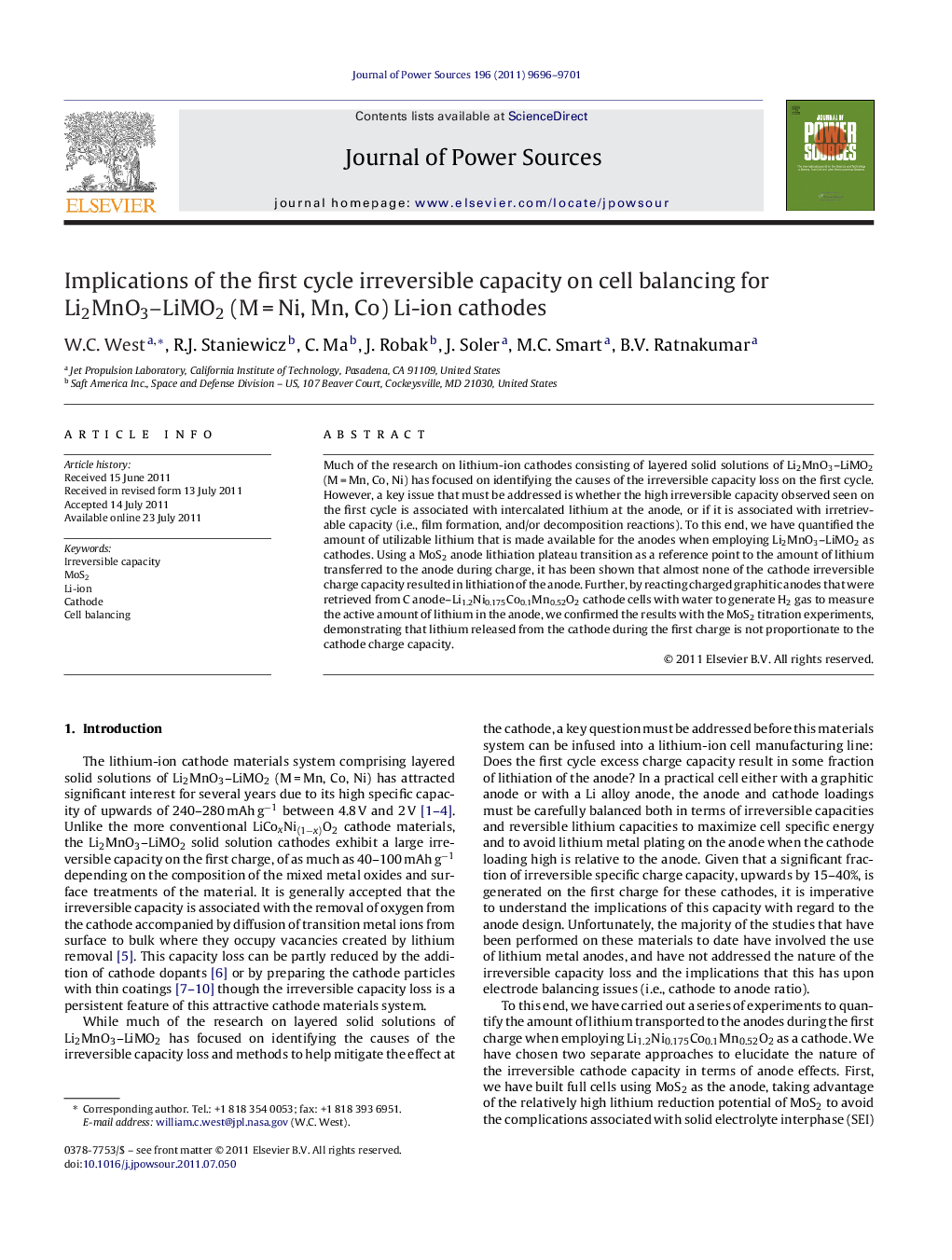| Article ID | Journal | Published Year | Pages | File Type |
|---|---|---|---|---|
| 1284728 | Journal of Power Sources | 2011 | 6 Pages |
Much of the research on lithium-ion cathodes consisting of layered solid solutions of Li2MnO3–LiMO2 (M = Mn, Co, Ni) has focused on identifying the causes of the irreversible capacity loss on the first cycle. However, a key issue that must be addressed is whether the high irreversible capacity observed seen on the first cycle is associated with intercalated lithium at the anode, or if it is associated with irretrievable capacity (i.e., film formation, and/or decomposition reactions). To this end, we have quantified the amount of utilizable lithium that is made available for the anodes when employing Li2MnO3–LiMO2 as cathodes. Using a MoS2 anode lithiation plateau transition as a reference point to the amount of lithium transferred to the anode during charge, it has been shown that almost none of the cathode irreversible charge capacity resulted in lithiation of the anode. Further, by reacting charged graphitic anodes that were retrieved from C anode–Li1.2Ni0.175Co0.1Mn0.52O2 cathode cells with water to generate H2 gas to measure the active amount of lithium in the anode, we confirmed the results with the MoS2 titration experiments, demonstrating that lithium released from the cathode during the first charge is not proportionate to the cathode charge capacity.
► Studied the nature of irreversible capacity in solid solution based cathodes. ► Findings answer question: How much cathode charge capacity lithiates anodes? ► Found that irreversible charge capacity yields almost no lithiation of the anode. ► Independent electrochemical and chemical studies afford very similar results. ► Findings hold critical implications for proper cell balancing in practical cells.
